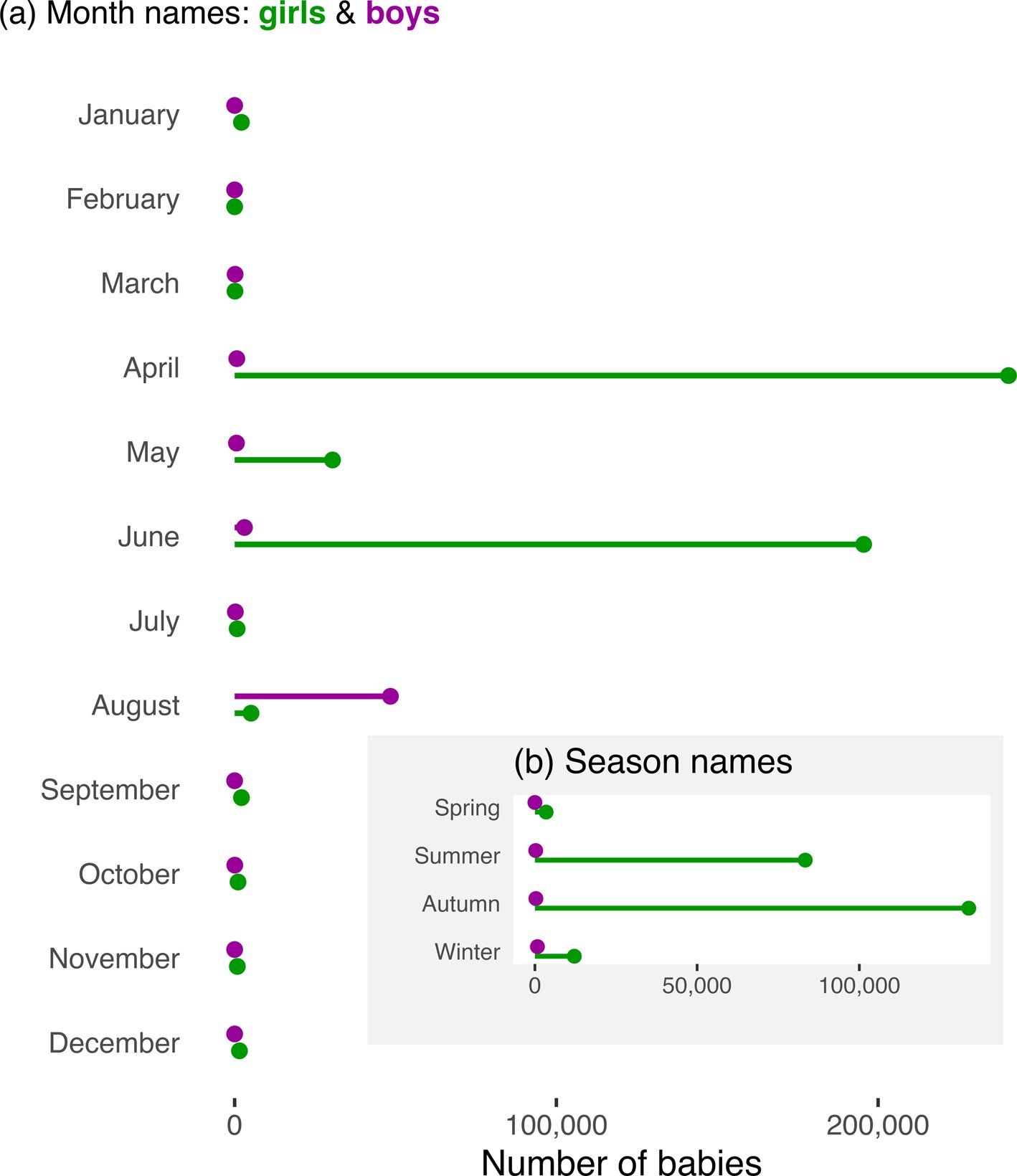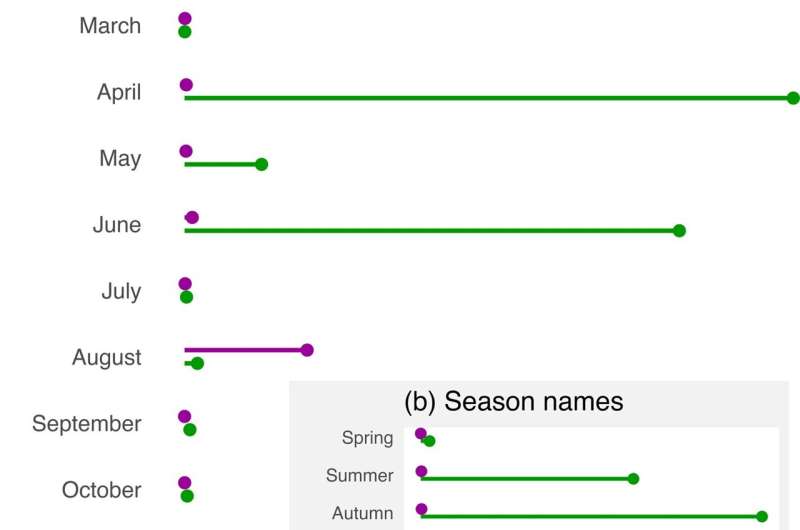

Climate leaves indelible marks on our lives—impacting where we live, what we eat, our work and our leisure. Two scientists recently documented one of climate’s lesser-known impacts: our given names.
Co-authors Raymond Huey, a professor emeritus of biology at the University of Washington, and Donald Miles, professor of biological sciences at Ohio University, reported that the popularity of certain month and season names for girls varies by geographic region in the continental United States.
The name April dominates monthly names in southern states where spring arrives early in the year. June is more popular in northern states where spring blooms later. Autumn is also more prevalent in the northern U.S., a region known for its brilliant fall foliage.
The trends, published in Evolutionary Human Sciences, surprised even the researchers.
“I thought that climate and the environment might influence the choice of baby names, but I never thought we would see a clear trend for either month or seasonal names, simply because parents take into consideration many factors when they name their child,” said Huey. “Because of these other factors—including strong cultural trends and traditions—I expected that there’d be too much social ‘noise’ in the data and we’d have a low chance of seeing any environmental ‘signal.’ But the signals were there, and they were strong.”
Miles added: “My initial reaction was we may not find any trend in the baby names. Parents have many reasons for selecting a name for their child, e.g., honoring a relative, actor or even whimsy. I was surprised to the significant environmental influence on names associated with seasons and months.”
The authors analyzed data on baby names from 1910 to 2021 collected by the U.S. Social Security Administration. Other researchers have used this database to document boom and bust cycles for names across decades. But this study is among the first to look for a role of climate.
The data showed that month-based names—the most popular being April, May, June and August—were more than 9 times more prevalent for baby girls than baby boys. Seasonal names were 182 times more numerous in girls than boys, with Summer and Autumn the most popular overall. August was the only prevalent month or season name that was more common in boys.
Huey and Miles broke apart the prevalence of the five popular season and month names for girls by state, which is how they started to uncover clear geographic trends.
April’s relative frequency decreased with the latitude of each state, making it most common in in the south, while Autumn increased strongly with latitude and was most common in northern states. In states along the southern border of the continental U.S., April was much more common than June, and the opposite was true for states along the northern border. And Autumn was by far the most common season name in northern-border states, but not in states along the southern border.
The strong geographic trends for April, June and Autumn likely reflect climate. April is more popular in places like Texas and Florida, where spring weather arrives relatively early in the year. June is more popular in northern states, like Maine and Wisconsin. And the prevalence of the name Autumn in the northern U.S. correlates with the picture-perfect fall colors in this region.
“What makes these geographic trends so striking to me is that we could still see them for April, June and Autumn even though these names have gone through major ‘boom’ and ‘bust’ cycles over the decades,” said Huey.
June was very popular in the early 20th century, but April ascended after World War II, peaking in the 1980s. Seasonal names were “virtually unknown” until the late 1970s, said Huey.
Climate change is shifting seasonal patterns, with spring “arriving” earlier and autumn “arriving” later. Miles and Huey checked to see if month and season names were also shifting—whether April, for example, had recently become more popular in northern states. They did not find a shift, and reason that such a “signal”—if it exists—may be difficult to see because some month names have been decreasing overall in popularity in recent decades.
“It’s also possible that we need more time to learn whether climate change is affecting the popularity of some of these names,” said Huey.
An ecologist, Huey’s prior research looked at the effect of temperature and other environmental factors on animals ranging from lizards to marine life. Studying baby names, though a divergence for him and Miles, who is also an ecologist, has shown a novel way that human culture is impacted by the surrounding climate.
Huey and Miles are also curious if climate will have other effects on baby names. In addition to months and seasons, plant names—such as Rose, Lily and Willow—are popular. It’s possible those names also vary by geography and climate, and could shift as the planet warms.
“We won’t know unless someone looks,” said Huey. “And, for the U.S. at least, there is a great dataset for that.”
More information:
Raymond B. Huey et al, Signatures of geography, climate and foliage on given names of baby girls, Evolutionary Human Sciences (2022). DOI: 10.1017/ehs.2022.53
Provided by
University of Washington
Citation:
What’s in a name? Sometimes, the climate (2023, May 26)
retrieved 26 May 2023
from https://phys.org/news/2023-05-climate.html
This document is subject to copyright. Apart from any fair dealing for the purpose of private study or research, no
part may be reproduced without the written permission. The content is provided for information purposes only.